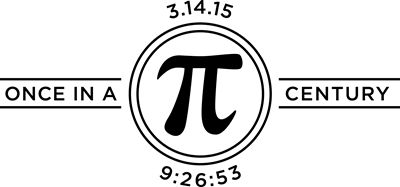Pi Day Activities for Your Classroom
Laura DeMoss |
March 12, 2015
 March 14 is almost here, the day when we celebrate pi, the essential mathematical symbol that represents the ratio of a circle’s circumference to its diameter. Pi has been known to humanity for more than 4,000 years, but the first Pi Day celebration wasn’t held until 1988, when the San Francisco Exploratorium physicist Larry Shaw hosted a public party celebrating the never-ending number with pie and a symbolic group march around a circular room. The idea caught on, and now Pi Day is celebrated around the United States and the world. Companies will offer pi discounts, MIT will send acceptance letters to arrive on Pi Day, Discovery Education will host a virtual field trip to the National Institute of Standards and Technology, and of course, there are sure to be plenty of pie baking, eating, and throwing activities.
March 14 is almost here, the day when we celebrate pi, the essential mathematical symbol that represents the ratio of a circle’s circumference to its diameter. Pi has been known to humanity for more than 4,000 years, but the first Pi Day celebration wasn’t held until 1988, when the San Francisco Exploratorium physicist Larry Shaw hosted a public party celebrating the never-ending number with pie and a symbolic group march around a circular room. The idea caught on, and now Pi Day is celebrated around the United States and the world. Companies will offer pi discounts, MIT will send acceptance letters to arrive on Pi Day, Discovery Education will host a virtual field trip to the National Institute of Standards and Technology, and of course, there are sure to be plenty of pie baking, eating, and throwing activities.
This Saturday has been dubbed a once-in-a-lifetime Pi Day because at 9:26:53, the date and time will be:
3.14.15 9:26:53
That’s 10 digits of pi (nine after the decimal point). It only happens once every hundred years, so the 2015 Pi Day commemorations look to be the biggest yet.
As the NMSI team plans our own celebration, we asked our resident pi experts, NMSI statistics and calculus content specialists Curtis Brown and Karen Miksch, to share some of their favorite Pi Day activities for helping students learn about the concept and bringing it to life in the classroom. Here they are:
Hold a pi recitation contest.
“I used to sponsor Mu Alpha Theta, a math honor society at my old high school and every year we held a contest to see which member could recite the most digits of pi—the winner won a pie,” Karen said. “The students always flocked to this meeting for the pizza pie, chicken pot pie, and the dessert. One year the winning student recited 81 digits!”
There are bigger contests for especially ambitious math lovers. Last year, a 13-year-old girl from Tennessee spent months memorizing pi, and won a Princeton pi recitation competition when she recited more than 1,700 digits.
Make it rhyme.
Karen and her students used to recite a calculus cheer, which includes pi at the end, before the AP exam as a good luck charm. “We usually had a few cheerleaders taking calculus who could help lead it,” she said.
There are plenty of pi-themed cheers and chants, and even a few love songs and carols, which students can memorize to learn pi. Here is Karen’s:
2,4,6,8
Now let’s differentiate.
Since we found the function’s rate,
Let’s reverse and integrate!
Now we’re moving,
Really sing it,
Graph that function,
Find that limit!
3.14159
And that’s the end
Of our Calculus rhyme!
Have hot dogs with your pie.
Curtis never ceases to surprise us with his ideas for making math fun and engaging for students, and his Pi Day suggestion was no exception: throw frozen hot dogs to approximate the value of pi. Math lovers may be familiar with the famous Buffon Needle Experiment; the hot dog experiment is a fun, classroom-ready variation on that.
For this activity, you’ll need frozen hot dogs, masking tape, and an open area. With the masking tape, make a grid of parallel lines at distances equal to the length of the hot dogs. Stand a few feet away from the grid and toss the hot dogs across, repeating a minimum of 200 times. Record the number of times you throw the hot dogs, and the number of times they land touching one of the lines.
Now, for the calculation phase of the project: multiply the number of tosses by two, and divide by the number of times the hot dog landed touching a line. For example, if you threw the hot dog 200 times and it crossed 126 times, the calculated value is (200 x 2)/128 = 3.125. The more times you throw, the closer your expected approximation to pi will be.
Want to replicate this project in your classroom? Get detailed instructions and an explanation of the math behind the experiment.
How are you celebrating Pi Day? Share your ideas in the comments section below.